When you are a young-earth creationist for long enough, you tend to notice some arguments get thrown at you more often than others. One of (if not the) most common questions I get is…
“WhErE dId AlL oF tHe FlOoDwAtErS gO?”
I have no problem answering this question if the asker is genuinely curious. But usually, skeptics of young-earth creationism ask this as a sort of gotcha question, as if I have never before considered such a devastating proposition.
It is not as if this question has never been answered: it has! Many. Times.
The views expressed in this article reflect those of the author and not necessarily those of New Creation.
This question has been answered so many times that it has become a PRATT. That is, A Point Refuted A Thousand Times. Nevertheless, diehard skeptics repeat this question over, and over, and over, and over again.
Nevertheless, while many people have answered the question itself many, many times, the science behind how we think the Flood’s mechanisms operated is not often appreciated. That is the purpose of this article.
The Problems Aren’t All On Our Side
Many keyboard warriors do not realize that their model of earth history has a water problem of its own. Even though they do not believe Noah’s Flood was a global event, old-earth geologists agree with young-earth geologists that sea levels were much, much higher than is currently the case. We know this because thick packages of marine sediments blanket large portions of the continents. They contain fossils of marine organisms like seashells, sharks, and even other marine reptiles. Geologists can examine the layers exposed in outcrops around the world and determine whether each layer formed underwater or on dry land. This gives them a pretty good idea of how much of the continents were underwater at any one time in earth history.
There are even clues that help us figure out how deep the water was in a given area. For example, a rock layer showing evidence of strong current activity (such as cross-bedding) suggests it formed in a region covered by shallow water. On the other hand, rock layers made up of fine-grained sediment, like limestone, can suggest that it formed in deep water.
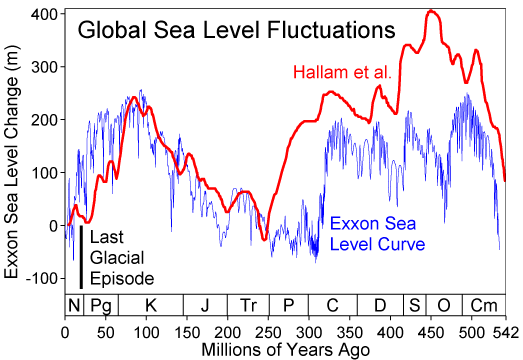
Geologists can then take this data and use it to construct a sea level curve. There is some flexibility in the interpretation of data that is fed into a sea level curve, which results in differing models. Nevertheless, there is general agreement among old-earth geologists that the maximum sea level in the past ranged from somewhere between 820 feet and 1312 feet higher than modern sea levels.
High and Dry Still Wet
Why is this problematic to the keyboard warriors against Noah’s Flood? Refer to the image on the side to see how much of the continents would be covered if these sea levels existed today.
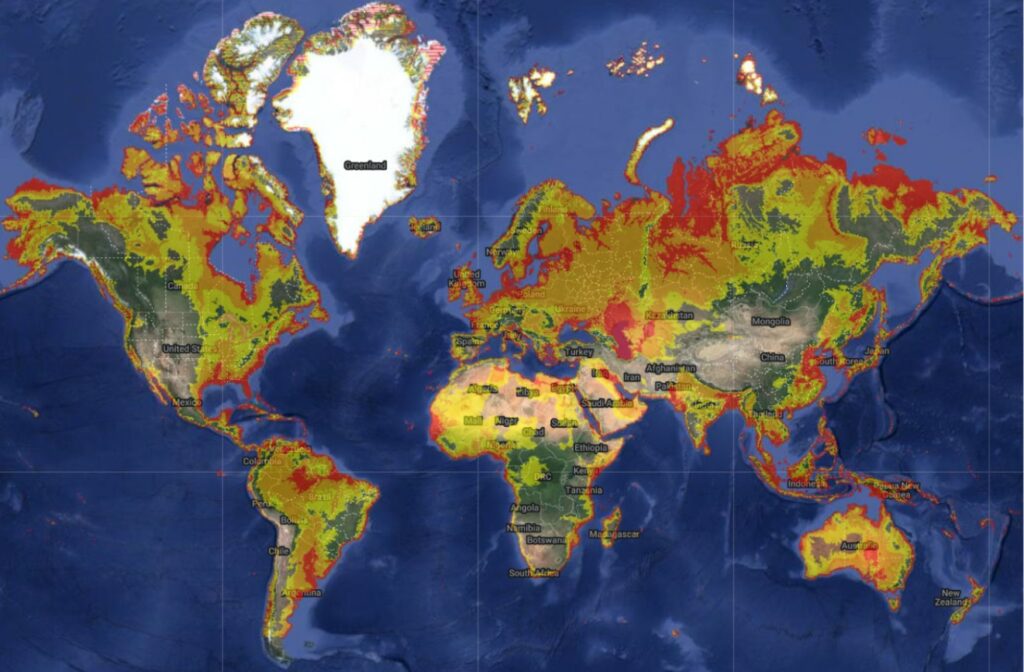
The red represents how much land area would be submerged if all of the ice melted. This would raise sea levels just 230 feet or so. As such, the melting of the polar ice caps alone is not sufficient to explain sea levels any higher than this. The orange represents how much land area would be submerged if sea levels rose 820 feet. And everything in yellow is how much of the land area would be flooded if sea levels rose 1312 feet. Most of South America and Australia, the American Midwest, virtually all of western Eurasia, and many other places, would be underwater.
We can now turn to the keyboard warriors who argue against Noah’s Flood with the same question they pose to us: if sea levels were so much higher in the past, where did all of that water go?
Where Did the Floodwaters Come From?
Before we address where the floodwaters went, we must first understand where they came from.
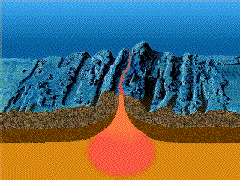
Scripture describes two primary sources of water for the Flood: 40 days and nights of torrential rain and the breaking up of the “fountains of the deep.” Exactly what these “fountains” were is up for discussion, but the “breaking up” seems to be a reference to crustal rifting that took place at deep sea ocean ridges, and perhaps even within continents.1 Today, we call this phenomenon seafloor spreading. New oceanic crust is hot, expanded, and more buoyant than older oceanic crust. The recycling of oceanic crust during the Flood shallowed the ocean basins, forcing seawater onto dry land. This process alone would have displaced enough ocean water to raise global sea levels as much as 1,500 meters (4921 feet).2 This makes sense in light of the apostle Peter’s description of the Flood too:
“…the earth was formed out of water and through water by the word of God, and that by means of these the world that then existed was deluged with water and perished.”
2 Peter 3:5-6
As we see from this passage, the pre-Flood waters proved a major source of water for the Flood. One Flood model that uses seafloor spreading as a flooding mechanism is Catastrophic Plate Tectonics (CPT).3
Where Did the Floodwaters Go?
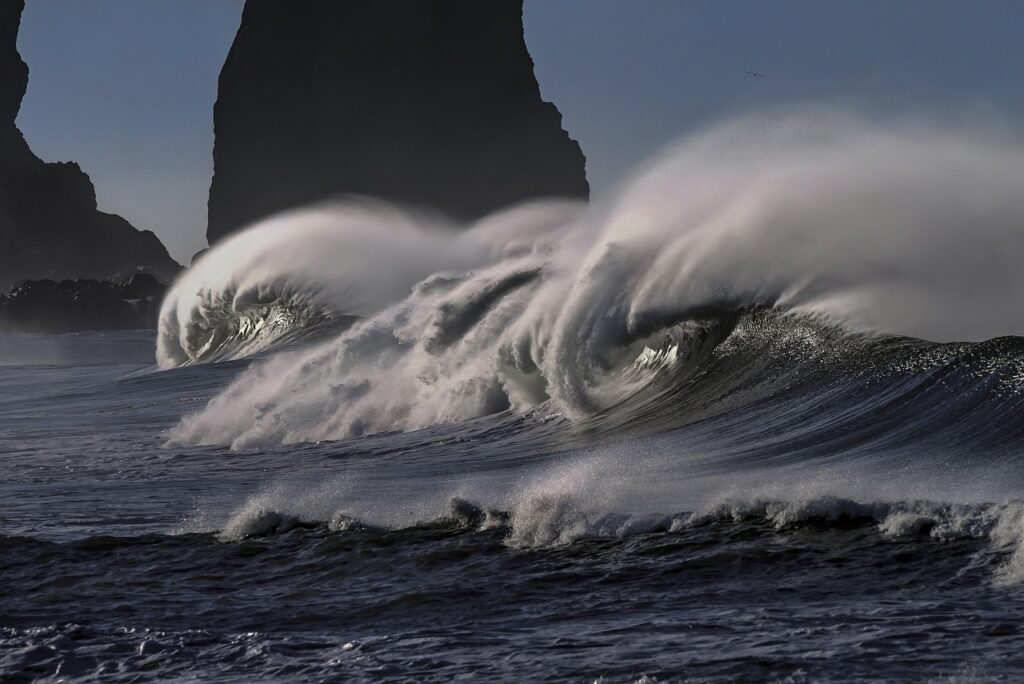
Even today, our planet is a water world. Over 70% of the earth’s surface is covered in water. If the earth’s mountains flattened and the ocean floor uplifted, there would be enough water to cover the globe in an ocean almost two miles deep! The reason the planet is not currently overflooded has to do with its topography. Contrary to its catastrophic, eruptive start, the Flood is described as having a gradual, drawn-out ending. Many months passed before the earth was dry enough for Noah, his family, and the animals to leave the Ark. Psalm 104:6-8 provides us with some clues as to what was going on in the latter half of the Flood:
“You covered it with the deep as with a garment; the waters stood above the mountains. At your rebuke they fled; at the sound of your thunder they took flight. The mountains rose, the valleys sank down to the place that you appointed for them.”
Psalm 104:6-8, ESV
The rise of mountains after the Flood seems to refer to mountain building. Similarly, the sinking of valleys seems to be referring to the deepening of ocean basins. According to the catastrophic plate tectonics model, the Flood’s destructive phase ceased when a buoyant oceanic crust replaced all of the original, pre-Flood seafloor.4 As the oceanic crust cooled, it became less buoyant. The ocean basins sank as a result, and the floodwaters were withdrawn from the landmasses.
So, where did the floodwaters go? They are still here, in our ocean basins!
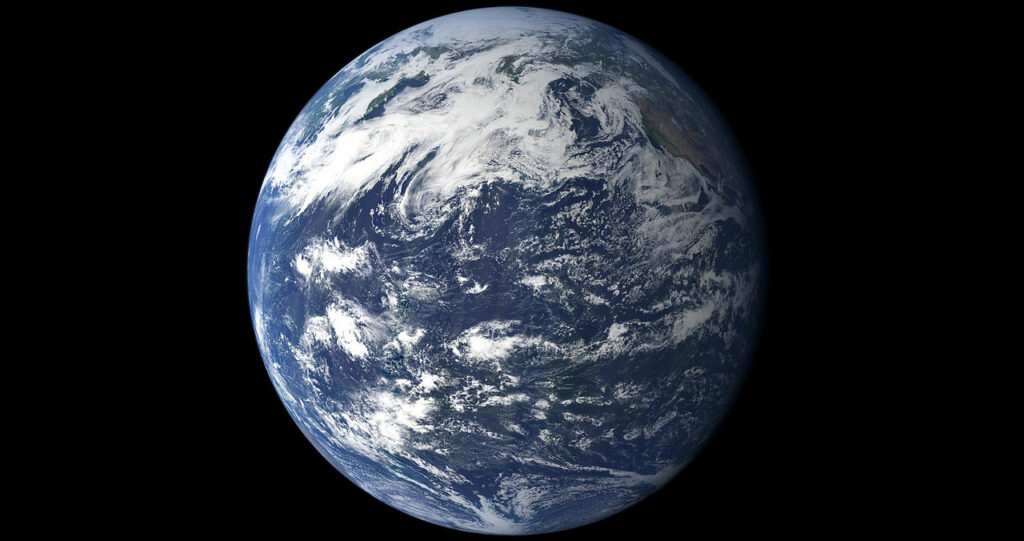
Footnotes
- Clarey, T. 2016. “Empirical data support seafloor spreading and catastrophic plate tectonics.” Journal of Creation 30(1):76-82. ↩︎
- Baumgardner, J.R., Humphreys, D.R., Snelling, A.A., Vardiman, L. and Wise, K.P. 1994. “3-D Finite Element Simulation of the Global Tectonic Changes Accompanying Noah’s Flood.” Proceedings of the International Conference on Creationism: Vol. 2, Article 39. ↩︎
- Austin, S.A., Baumgardner, J. R., Humphreys, D. R., Snelling, A. A., Vardiman, L., and Wise, K. (1994) “Catastrophic Plate Tectonics: A Global Flood Model of Earth History,” Proceedings of the International Conference on Creationism: Vol. 3, Article 56. ↩︎
- Austin, Baumgardner, Humphreys, Snelling, Vardiman, and Wise, 1994. (Footnote 3) ↩︎


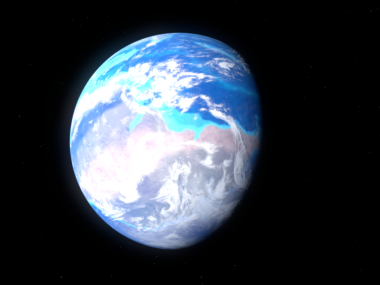



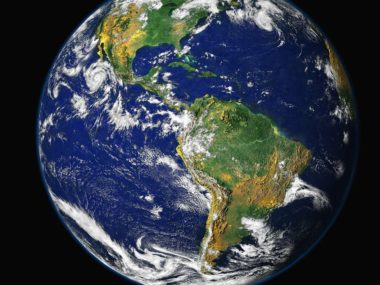





This is really disingenuous but that’s what you have to expect from creationists. In reality there is water problem many factors affect sea levels. Volcanic activity Glaciation erosion and tectonic processes like uplift and subsidence. The amount of water is stable what changes is its distribution and the location of the crust.
Bravo!! That keyboard warrior, continue with your nonsense and your anti-creation bias. You have shown me that you don’t like answers
Okay do you have a actual argument?
In the publication they gave arguments
Christian shows a map where the red image of the continents represents how much land would be submerged if all the ice melted. This would raise sea level only about 230 feet. As such, melting ice caps alone is not enough to explain sea levels higher than this. The orange represents how much land area would be submerged if sea level rose 820 feet. And everything in yellow is the amount of land area that would be flooded if sea level rose 1,312 feet. Most of South America and Australia, the American Midwest, virtually all of Western Eurasia, and many other places would be underwater.
Now we can turn to keyboard warriors (like you) who argue against the biblical Flood with the same question they pose to us: if sea levels were much higher in the past, where did all that water go?
That is one of the arguments.
Oh yes my misguided friend glaciation isn’t the only factor at play tectonic forces can push land above the sea or pull it down as well. How about you stop reading creationist propaganda and open Google scholar
Or Wikipedia. That source is well known for being objective and scientific.
Jacob–why don’t you do a mass-balance from today back to the past and show us your calculations?
Can you read = you answer…!
Be careful you sound about to flounder to a “distant shore”…lol
I think the bigger problem with something like CPT is where did the heat go?
I am new to this conversation, and a long time creation science student (40 plus years of study). This planet was originally inside a giant water bubble (Gen 1:6-8). Firmament means Curved Surface that Hold Up Water. This gave the planet a constant temperature year round and all over the planet. This also prevented solar radiation from striking the planet. This in turned allowed plants and animals to live 9-10 times longer than they normally do. The water bubble popped during the days of Noah. (See a bubble pop in slow motion on one of the many online platforms). The main body of the water drop was focused mainly where the pacific Ocean now lies. This pushed the guts of the planet up on the opposite side of the planet, mainly the Mid-Altantic ridge. I could go on for hours with the evidence that supports this Biblical view. Namely why the radiation dating is so far off. I plan to prove this scientifically using computer modeling. right now, I am looking for like mined creation science types who are open to exploring and possibly proving not only this, but also, that the age of this planet is approximately six thousand years old.
I agree that the earth is about 6,000 years old… The earth’s atmosphere definitely allowed human beings to have a much longer life before that changed when God flooded the earth… Noah lived 350 years after the flood, and his son Shem lived 500 years after… God kept them alive as a continued testimony for mankind to ensure their existence reminds us of what transpires when sin is adopted as a way of life… As history has been quite clear of, that lesson has not been learned, and even while Noah, and his son Shem were alive, humanity again fell into a spiritually depraved state.. To the point of building a tower to show defiance against God under the headship of Nimrod.. We know that God ended that rebellion with the language barrier.. But nevertheless, in these end times we see this once again occurring… Confusion reigns when sin flourishes… God our Savior will return to save humanity from utter annihilation, and for the sake of the elect as His Word declares..
The argument makes sense.